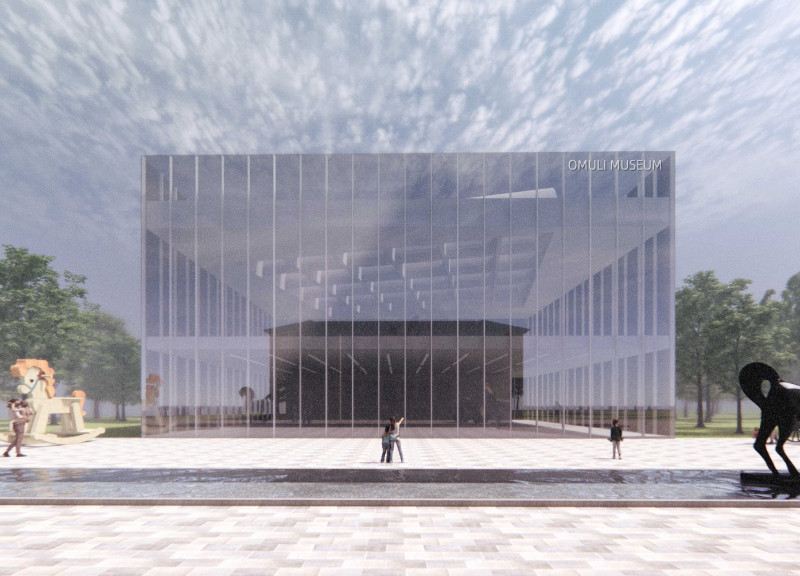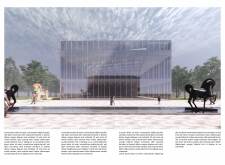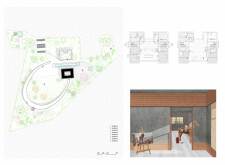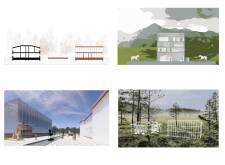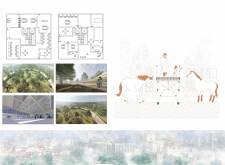5 key facts about this project
OMULI MUSEUM is a place where art and culture come together in a thoughtfully designed space. Situated within its geographical context, the museum serves as an exhibition site and a community gathering spot. The design emphasizes geometric shapes and clear spatial organization, creating an environment that is inviting and encourages exploration.
Geometric Forms
The design prominently features geometric shapes, offering a sense of structure and clarity throughout the museum. These forms are strategically used to guide movement and establish a visual flow. This careful arrangement fosters a dynamic atmosphere while balancing aesthetics and practicality.
Negative Space
Negative space plays an important role in the overall design, creating areas that allow for contemplation and a sense of openness. By reducing visual clutter, the architecture enables visitors to focus on the artworks and their surroundings. As one explores the museum, the contrasting filled and empty areas contribute to a richer experience, inviting deeper engagement.
Color Palette
The museum uses a restrained color palette that enhances the visitor experience without distracting from the art. This choice helps unify the different spaces and maintains a calm atmosphere. By keeping colors subdued, the design directs attention to the exhibits, emphasizing their significance within the context of the museum.
Design Details
Architectural details show a commitment to craftsmanship and precision. Clean lines and balanced proportions contribute to the overall elegance, where functionality meets visual appeal. Attention to these details not only adds interest but also promotes durability.
Light interacts with the surfaces, casting shadows and highlights that change as the day progresses, enriching the environment and providing a unique experience for every visitor.


